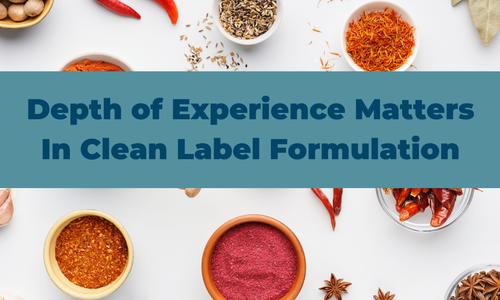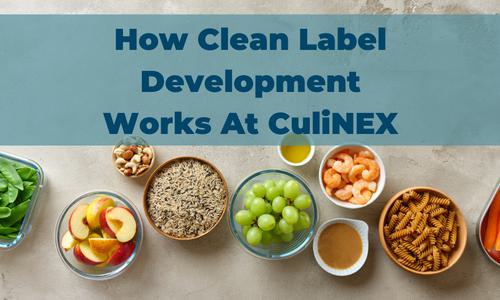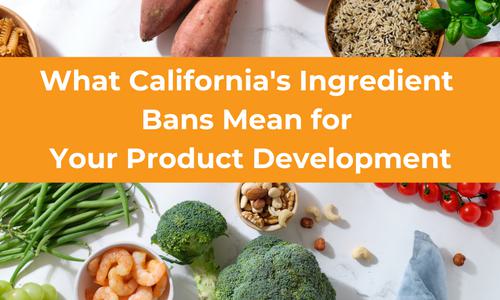
The Difference Between a Recipe and a Formula
You have a recipe that you have developed in your kitchen at home, and now you’re ready to scale it for mass production. Just multiply, right? Unfortunately, it’s not as simple as one would think and something we help our clients with every day.
The key to translating a recipe into a formula is reproducibility. From flavor, consistency, economic implications, and consumer satisfaction, the food item needs to be produced exactly the same, every single time. For this to be possible, a recipe must be converted to a formula, which then needs to be commercialized, or tested and approved in a manufacturing setting.
What’s the difference between a recipe and a formula?
A recipe is a set of ingredients and instructions need to make a food item. The results vary from batch-to-batch and person-to-person based on the inherent inaccuracies such as human error and measuring in volume rather than by weight. Home cooks and restaurants use recipes.
A formula is a fixed set of specific ingredients listed in percentage by weight and processing instructions that have been standardized to consistently make a food item. All of the ingredients in a production formula total 100 percent, so the formula can easily be scaled up or down depending on production demands. Food product developers and manufacturers use formulas.
A look inside the cookie jar
Let’s take a look at the basic ingredients in a chocolate chip cookie recipe. You can see where the inaccuracies of using volumetric measurements for dry goods impact the formula. (The USDA Nutrient Database and Baking & Pastry by the Culinary Institute of America have been used as references materials):
- Flour – one cup of all purpose flour can weigh between 113-125g, depending on who’s measuring. Cake Flour ranges between 93g (sifted) to 137 (dip and sweep). In addition to weight, all purposes flours can range considerably in protein and ash content, also affecting the finished cookie.
- Salt – one tablespoon ranges between 17-18g, depending on the size of the granules. Even kosher salt can vary between manufacturers in size, shape and density.
- Brown Sugar – packed firm or measured loose? Light or dark? The weights will range from 145-226g per cup. The darker the sugar, the higher the molasses content and more hygroscopic properties it will contribute to the cookie. This is why cookies made with brown sugar are chewier than those made with white sugar alone.
- Eggs – one large egg can weigh between 45-50g; most often, frozen liquid eggs are used in production, as shelling eggs is labor intensive and inefficient.
- Vanilla Extract – one tablespoon can weigh 13-14g. Commercial vanillas come in many different forms, from single strength to 4x; if you swap them one for one, your flavor will be out of balance.
- Chocolate Chips – what size of chips? Which brand was purchased? From minis to standard chips to chunks, the weighs can range from 168-182g per cup. Ingredient statements, cocoa percentage and different types of fats can affect the melting point and flavor.
- Walnuts – halves, pieces or bits? Raw or toasted? This irregular ingredient can be 100-120g per cup. Nuts go rancid very quickly, and manufacturers buying in bulk will need to exhaust their supplies quickly to ensure freshness.
You say tomato, I say tomahto
Besides the method of measuring ingredients, processing can have a substantial effect on the finished good. Are the ingredients room temperature or cold? Is the butter melted or solid? How long are the butter and sugar creamed, 2 minutes until they are just combined or 5 minutes until the butter is properly aerated from the sugar crystals? Are the dry ingredients sifted together or just dumped in? Is the dough baked right away or is the dough refrigerated until solid? You can see how quickly the variables get out of hand.
In a home kitchen, these variations don’t amount to a discernable difference most of the time, but can be the cause of a “failed” recipe that was rated 5 stars on the internet. Small changes and infrequency in which it’s made allow for great forgiveness in detecting differences.
Why does it matter?
However, on a commercial scale, changes in ingredient specs, weighing and mixing are compounded and slight differences are detectable in the finished product. Take the brown sugar variances for example: assume per cookie recipe that the batch size is 1,500lbs and loose vs. packed brown sugar ranges between 145-226 lbs per batch. An 81 lb variation would cause a significant flavor and texture difference in the product. When one or more ingredients is not consistently measured, the finished product will be different each time, and the consumer will not be receiving the consistent product that is expected.
By changing a recipe to a formula, the inconsistencies in ingredients, measuring and processing are eliminated when a robust product specification is written; only then is a reproducible product possible. For help turning your recipes into commercially viable products, including benchtop testing, ingredient and co-packer sourcing, and specification development, give CuliNEX a call!








